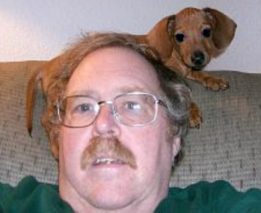It is a fight for survival between an opossum and a rat. The opossum holds the weight advantage. The desperate rat has far more mouths to feed. A coyote stands by, waiting to greet the loser. Such a grand banquet, a feast big enough for all. So, why are they fighting, the coyote must wonder. No matter. He is not a scavenger and prefers his meals fresh.
High above, a peregrine falcon glides on air currents uplifted from the sun-warmed concrete buildings below. From her spiraling flight she observes the fracas at the dining table. She, too, has mouths to feed. With her sharp eyes, she observes mice as they scurry in and out of the piles of trash. Folding her wings, she dives; hoping to take an unsuspecting meal with her talons. But the target spots the falling shadow and swerves at the last instant. No loss, there are plenty more opportunities.
Thermals lift her skyward to resume her watch. The mother bird is oblivious to the hot concrete beneath her wings creating the updrafts.
This is a city of a quarter million. Where are the people?
At the banquet table, the rat has lost the battle. The coyote moves in to congratulate him in his own way. But the rat’s children will not go hungry. There is plenty of food for all.
For now.
At the top of the hill, another rat rummages through the collapsed remains of a camp, which has vomited its garbage down the hillside. Tattered tents, ripped plastic tarps, and moldy sleeping bags lie in tangled knots among abandoned shopping carts and piles of rusted bicycle parts. Everywhere the rat searches, he must avoid the discarded hypodermic syringes. He remembers his mate. An unstable stack of garbage collapsed beneath her four days ago, and she was impaled by a needle. The syringes bear traces of opioids.
A pair of legs protrudes from beneath a pile of rotted cloth. Human legs. Partly decomposed, they bear black splotches on what desiccated skin remains. It is the tell-tale sign. By instinct, the rat leaps back to avoid contact with the cadaver. Too late, he stops to scratch his left ear.
A flea.
Below in the city, the same thing can be found. Many bodies remain where they fell. Out of fear, the living avoid the dead. No one bothers to pick up the fallen. There are too few left alive to do so. One unwritten word can be read on the ashen, black-blotched faces of the humans.
Plague.
The majority of those still healthy enough to move, have fled the compact closeness of the cities. Death has not yet spread to the smaller towns and farming communities outside the once crowded cities and suburbs. In quickly erected farming settlements, humans capable of producing their own food can still survive. Those unwilling to work to support the colony will starve. Some turn to theft and are shot.
The rats, fleas, and the death they carry, follow the migration.
Had we humans taken the time to study history and learn from it, our demise could have been avoided. The plague has been around as long as recorded history. From time to time, it returns with a vengeance, causing a world-wide pandemic among humans.
Past pandemics show the symptoms of the plague may vary, but the mortality rate for victims does not. Once infected, ten days remain. There is no vaccine to prevent it, and no cure. The spread always happens the same way: either by contact with infected animals, or by the fleas of those animals.
The hawk looks down from her aerial observatory, to lifeless streets below. Among the human corpses are the bodies of cats and dogs, domestic pets, as well as those of mice and rats. A veritable feast for a falcon, if she’s willing to scavenge the dead.
At least for now.
* * *
This is a concept for a dystopian novel based on a photo of a vagrant camp in south Seattle, Washington, situated on a bluff overlooking the freeway. The same thing is seen across the greater Seattle area. Garbage is strewn down the hill for fifty yards, from the camp to the freeway. The local home owners in the area are fighting a vermin infestation as well as a sharp increase in property crimes. Seattle now has nearly three times the property crimes per capita as New York. And those are only the ones reported. Many don’t waste their time calling law enforcement. Seattle and King County governments are ignoring the problem. In fact, they are encouraging it. Shoplifters are seldom stopped, let alone arrested. And if they are arrested, they will never be prosecuted. Vagrants know this.
In the ‘50s and ‘60s, Seattle was known as The Emerald City, because of the beauty of the evergreen forests, and the aquamarine of Puget Sound. In the last ten years, it has become The Garbage City. Or, Free-attle, as the tweaker vagrants know it.
There was a fellow sleeping under an overpass, just south of downtown. He had been sleeping there for at least four years. One day while I drove by, I watched a large gray rat crawling around his camp, in and out of his sleeping bag. The guy had passed out and was oblivious to the jeopardy he was in.
With exponential growth of the problem happening, what will the city look like in ten years?
I wonder …
